About
Allerpet
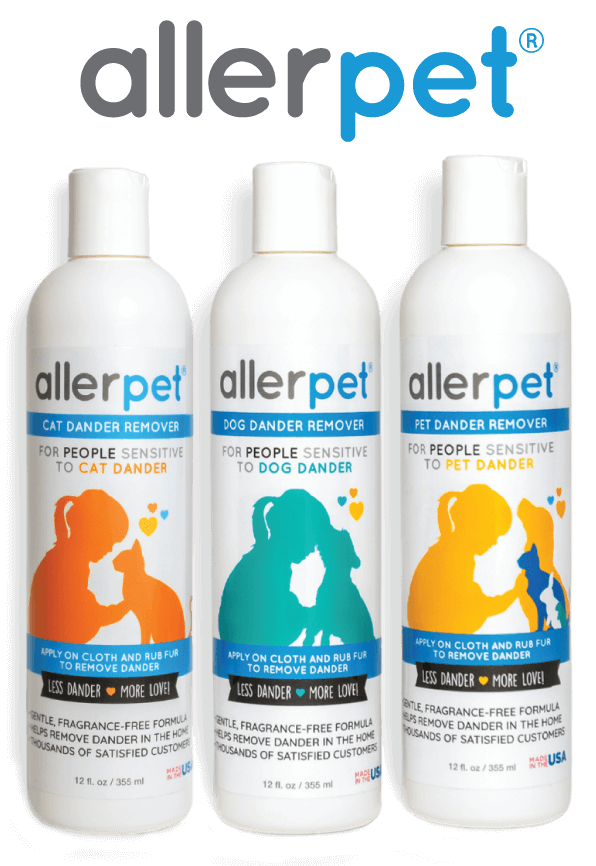
Allerpet was created by Larry and Shirlee Kalstone as the first external product to aid in the removal of pet-related dander from the animals of those persons who wanted pets but were unable to have them because of allergic reactions.
Allerpet, introduced in 1988 after three and one-half years of testing, is a product for people who are allergic to pets.
Allerpet was the first, and is still the only, product of its type to undergo formal university testing.
THE PROBLEM: ALLERGENS
Any animal with fur or feathers can trigger an allergic reaction.
Hypoallergenic Dogs & Cats . . . Fact or Fiction?
Stories have been making the rounds for years about certain breeds of cats or dogs being hypoallergenic. The breeds referred to are always those with no hair, little hair, or that do little shedding. It is unfortunate that these stories are not factual.
All breeds of cats and dogs…purebred, crossbreed or random breed … cause allergic reactions, however, it is possible for an occasional kitten or puppy from any litter of any given breed to be relatively free of problem causing dander, thus giving the illusion that the breed is hypoallergenic. This accidental happening is usually the source of the misinformation that follows it.
Any animal with fur or feathers can trigger an allergic reaction. These include cats, dogs, rabbits, gerbils, hamsters, guinea pigs, ferrets, mice, rats and birds. Cats are by far the worst offenders, followed by rabbits and dogs.

Shedding
As dogs and cats progress from birth to old age, a notable change occurs in the quantity of dander and scale produced and circulated throughout the home.
Puppies and kittens have very supple skins; they shed little dander and cause relatively few problems, even for animal-allergic persons.
Aging animals lose this suppleness and shed much more profusely (there is a dramatic difference in an animal at 2 months and at 2 years). This condition is intensified by the low relative humidity and infrequent air exchanges of today’s homes and apartments… frequently as little as one air change per hour.
For the allergic person, the normal use of a coat conditioner to minimize this drying effect is thwarted by their oily nature which is predisposed to attract, collect and bond additional irritants almost instantaneously.
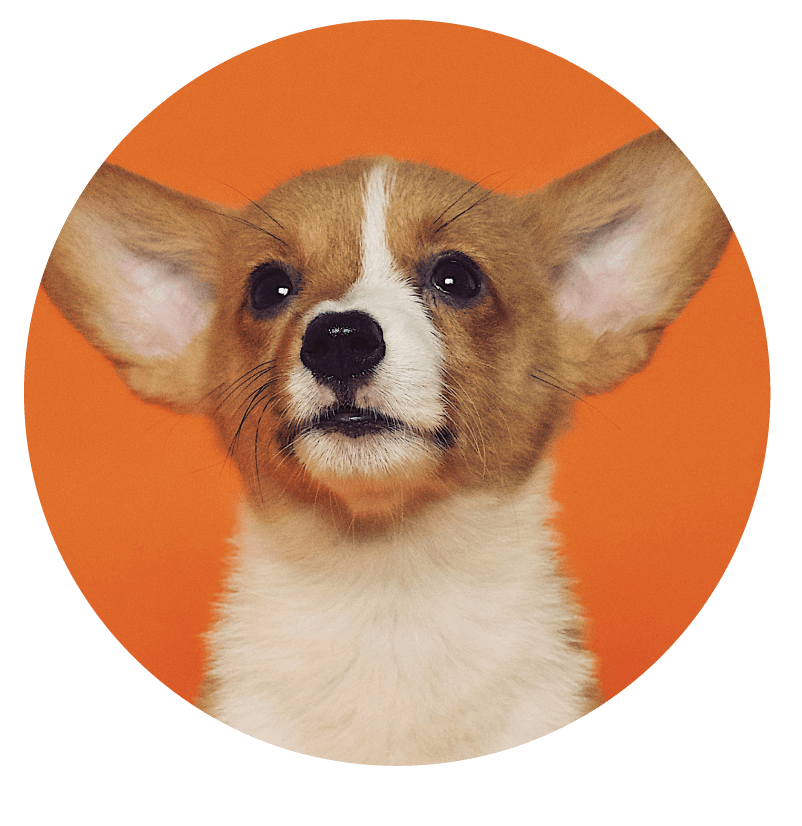
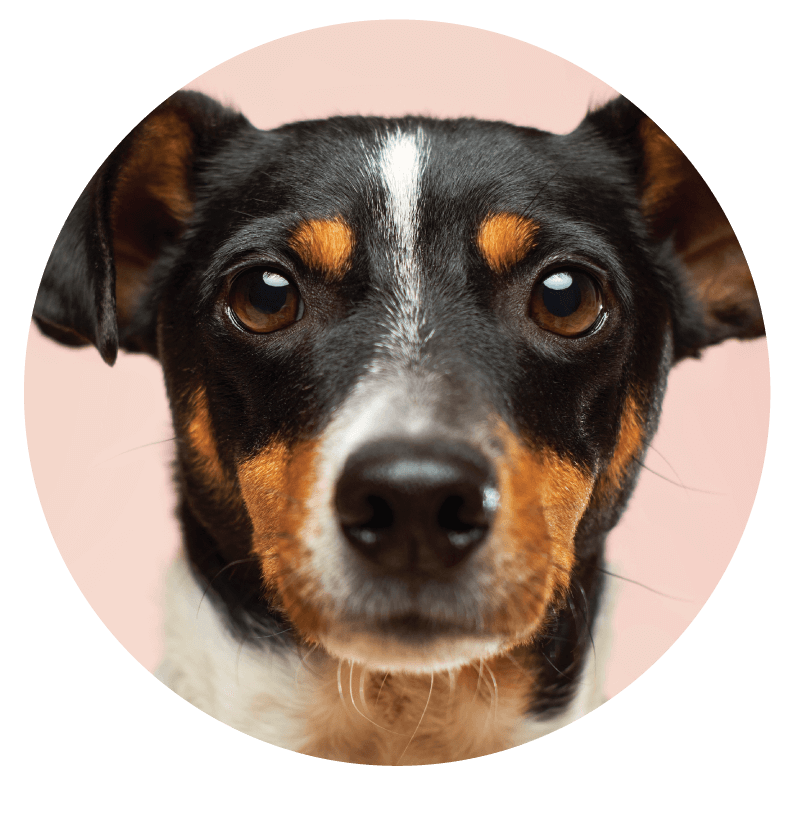
The Pet Related Allergens
Dander
The first major pet-related allergen, especially associated with dogs, is dander, probably because it is easy to see on the hair. Dander, another name for the dead skin cells that animals shed, is indeed an important allergen. All warm-blooded pets, regardless of hair length, produce dander that can trigger allergic reactions. The principal difference between dander and the following allergens is its relatively heavy weight. Dander falls to the floor or furniture rather quickly, as opposed to Fel d1 which floats interminably in the air where it can be inhaled deeply into the airways of the lungs.
Fel d1: The Cat Allergen
Almost four out of five persons who are allergic to animals are allergic to cats. You can be virtually certain that their problem is from Fel d1.
Fel d1 is deposited onto the skin and coat both from the secretions of the sebaceous glands and from the cat’s saliva during its self-cleaning process. . . more by male cats than by females. The highest concentrations of Fel d1 are generally found around the genitalia and the base of the tail but. because a cat’s self-cleaning is an on-going process for most of the day, it is found over the entire animal. As the Fel d1 (microscopic in size and invisible to the eye) dries on the skin and hair, it is carried into the environment by currents of air.
Fel d1 is an extremely potent allergen, capable of triggering an allergic reaction almost instantly. Continually airborne, it is inhaled with every breath. This is why a reaction can occur within a few minutes after entering a home inhabited by a cat.


Saliva and Urine
Along with dander and Fel d1, the proteins from saliva, urine and other body secretions are other major sources of pet allergens. While they are not as potent as Fel d1, it is of utmost concern that these allergens be cleansed from the hair as often as possible. Regarding dogs: research has shown several breeds of dogs to have breed-specific allergens, however, no single breed has yet been found to be more or less allergenic than any other.
Birds and small animals
The major bird allergen comes from the powdery feather dust that coats bird feathers. Being caged does not prevent birds from scattering this dust into the atmosphere as they flutter their wings, preen themselves and move about. To minimize this, apply Allerpet Pet Dander Remover using a trigger spray bottle to mist the bird as you would with water, spraying away from the head and towards the tail.
Even though rodents and most rabbits are caged, their major allergens are derived from urine, saliva and dander. Apply Allerpet Pet Dander Remover or Allerpet Cat Dander Remover. Dry thoroughly with a towel. Frequent cage cleaning, fresh bedding and good ventilation are all important sanitary and health measures.
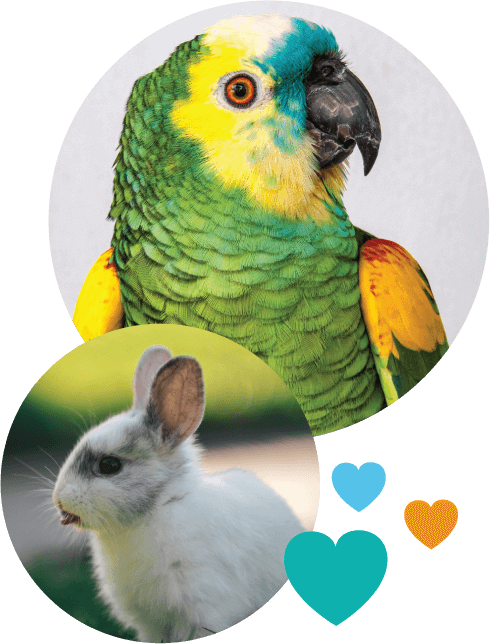
The Problem
THE PROBLEM was how to cleanse the animal’s fur and skin of these allergens and, at the same time, keep the alkaline pH balance and the natural protective oils and film in place. It was felt that a weekly cleansing of the animal was necessary to adequately reduce and maintain the allergens at an acceptable level. (This was later shown to be reasonably accurate.) Over a period of time, frequent bathing tends to dry out the fur and skin, resulting in a greater production of dander and flaking than would normally occur. Of prime importance was how to prevent the skin from being stripped of its natural lipid film and the fur of its protective oils.
BATHING was not a viable option. It had its own inherent problems… the time, the effort, the turmoil, and realization that most patients would never follow thorough with it. An alternative method of care was needed that pet owners would use with a greater degree of regularity.
THE ALLERPET SOLUTION
Allerpet Dander Remover is specifically formulated to help remove pet allergens
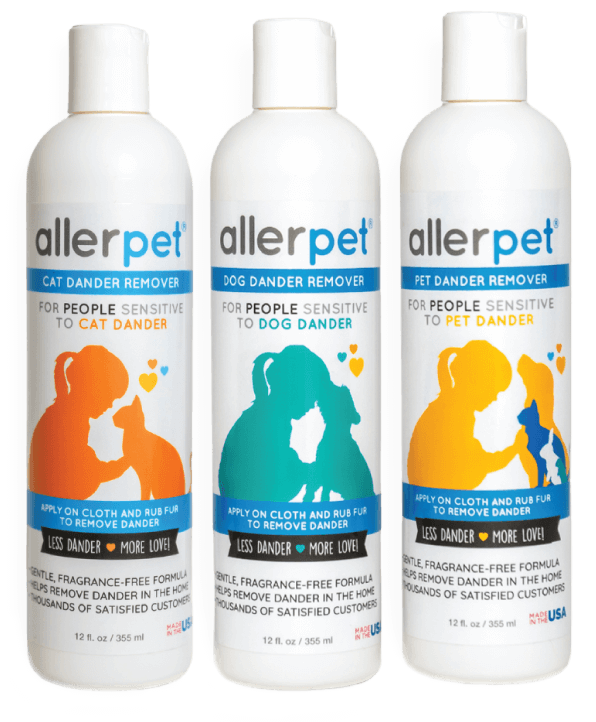
The Goal & Premise
THE GOAL was to develop a product that was safe and gentle to use; would cleanse the animal of dander; would re-moisturize the fur and skin to minimize future accumulations of dander and scale; would replenish the stripped-out oils of the hair; could be applied conveniently without effort; and most importantly, would not leave any residue on the coat to either ingest or to attract additional allergens.
THE PREMISE behind Allerpet is the removal of pet-related dander before it becomes airborne and has an opportunity to enter the environment of an allergic person. It is felt that cleansing an animal’s fur and skin will keep it sufficiently free of fel d1, dander, and other allergens to cause the total environmental dander load to fall within more acceptable levels. In university testing, Allerpet reduced Fel d 1 in-house dust by 50% with weekly use. (Please see the abstract of the Bayer-supported-study here). Further testing indicates greater reduction in allergen levels with use every 3-4 days.
Additional Testing
ADDITIONAL TESTING of Allerpet commenced in April of 1985. The study lasted over three years and involved 168 individuals, all of whom were either allergic to their pets or had someone in their household who was. All individuals in the study told us that they were experiencing allergic reactions with varying degrees of discomfort. All had sought professional help at least once during the previous year and had either cats or dogs as their primary pet. Many also had rabbits, birds, or small furry animals as secondary pets. All of their statements were accepted at face value. Information gathering was casual, but well documented. All individuals were talked to every three to four weeks and their comments noted.
Throughout this study, a consistent 80 to 85 percent of those participating expressed a significant improvement in their ability to tolerate their pets.
This high success rate is not inconsistent with many papers that have been published on the subject of aero-allergens over the last few years. Removal of the allergens from an animal before they have a chance to become airborne is the easiest, quickest and most certain way to reduce the environmental load of pet-related dander. This is especially true of fel d 1 which remains airborne for such protracted periods. When the first steps to minimize the build-up of pet dander in the environment are taken, Allerpet should be considered as an integral part of the solution.
Allerpet was the first, and is still the only, product of its type to undergo formal university testing.
The first suggestion of many professionals is to give up your pet for adoption. This may well be a necessity, but Allerpet presents another possibility. The Allerpet solution substantially reduces the volume of dander, including Fel d1, on an animal’s fur and skin by eliminating them at their source. Currently, the treatment of choice for most patients allergic to animals is complete avoidance. Unfortunately, this treatment is not always practical. There are those whose livelihood depends on animals and those who just simply will not follow the advice to avoid them. It is also unfortunate that the frequent recommendation of avoidance deters many others who need professional help from seeking it. Intense emotional issues surface when people are told to give up their pets. It can be especially traumatic when several children are involved and only one is allergic. Indicative of this are the large numbers of persons who keep their pets in spite of being told to give them up. (Estimates range from 65% to 85%)
Being allergic does not necessarily mean that you can’t have a pet or that you must give up one you already have. Learning more about minimizing pet-related allergies and making some minor adjustments will frequently solve your problem.
It is frequently possible for an allergic persons to live comfortably with a cat, a dog, or any other furred or feathered pet if they will make an honest effort and commitment to care for their pet regularly.

